The strong force keeps also the protons together in the nucleus, despite their mutual
electrostatic repulsion.
Contemporary Physics Education Project
The Nuclear Force
The protons in the nucleus of an atom have a positive charge. If protons come near each other, they are usually pushed apart by the electromagnetic force. (Remember, opposite charges attract, but like charges repel!).
If two or more nuclei (and the protons in those nuclei) come VERY close together, the nuclear force comes into play. The nuclear force wants the protons to come together. The nuclear force is stronger than the electromagnetic force so the nuclear force may be able to "glue" the nuclei together so fusion can happen.
The nuclear force is also known as the strong force.
This is one of the fundamental forces in the Universe.
The nuclear force keeps together the most basic of
elementary particles, the
quarks. Quarks come together to form the protons in the atomic nucleus.
You might also be interested in:
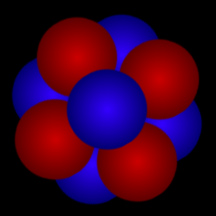
Atoms have two main parts: a massive nucleus at the center and a swarm of fast-moving electrons around it. The nucleus is made up of protons and (usually) neutrons. Almost all of the mass (more than 99%)
...more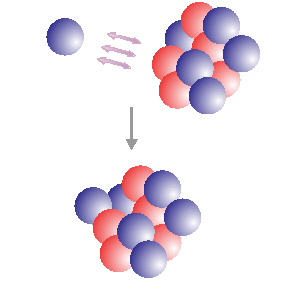
Neutron capture can occur when a neutron approaches a nucleus close enough for nuclear forces to be effective. The neutron is captured and forms a heavier isotope of the capturing element. When the new
...more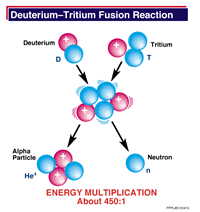
The center of an atom is called the nucleus. Nuclei is the plural of nucleus. When two atoms come together, and their nuclei combine, you have fusion. Fusion releases energy. By using Einstein's famous
...more
The protons in the nucleus of an atom have a positive charge. If protons come near each other, they are usually pushed apart by the electromagnetic force. (Remember, opposite charges attract, but like
...more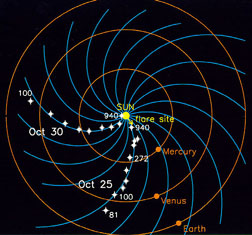
The Sun acts like it has a big magnet in the middle of it. We call this the Sun's magnetic field. The Sun's magnetic field has a fancier name, the Interplanetary Magnetic Field (IMF). This just means that
...more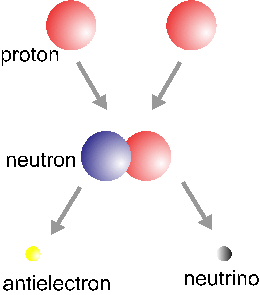
In the basic Hydrogen fusion cycle, four Hydrogen nuclei come together to make a Helium nucleus. This is the simple version of the story. There are actually electrons, neutrinos and photons involved in
...more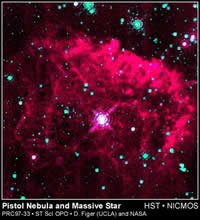
Fusion in the core of stars is reached when the density and temperature are high enough. There are different fusion cycles that happen in different phases of the life of a star. These different cycles
...more
A Supernova is a very massive star that explodes at the end of its life. The supernova is where the heavy elements (heavier than iron) are made.
...more














